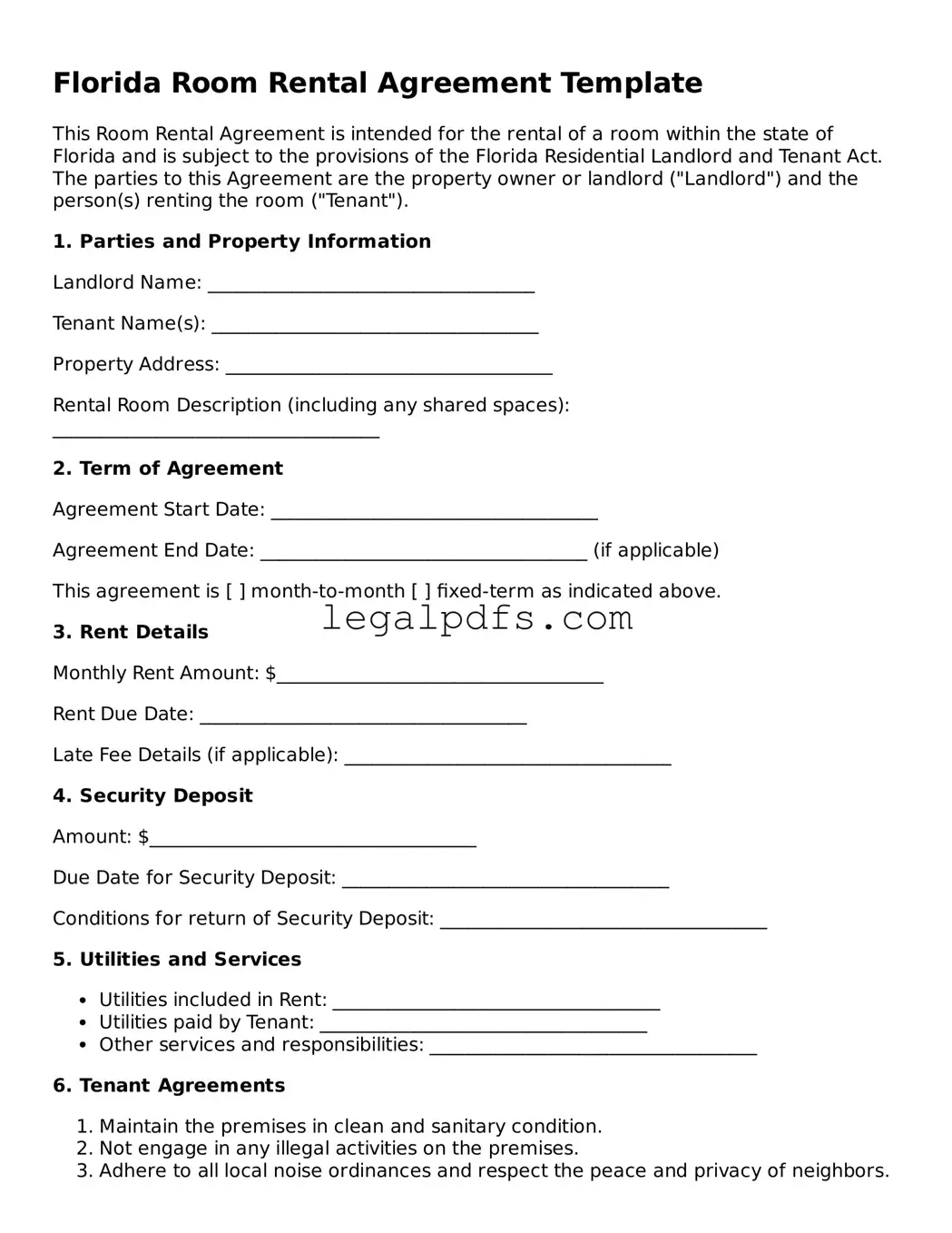Florida Room Rental Agreement Template
This Room Rental Agreement is intended for the rental of a room within the state of Florida and is subject to the provisions of the Florida Residential Landlord and Tenant Act. The parties to this Agreement are the property owner or landlord ("Landlord") and the person(s) renting the room ("Tenant").
1. Parties and Property Information
Landlord Name: ___________________________________
Tenant Name(s): ___________________________________
Property Address: ___________________________________
Rental Room Description (including any shared spaces): ___________________________________
2. Term of Agreement
Agreement Start Date: ___________________________________
Agreement End Date: ___________________________________ (if applicable)
This agreement is [ ] month-to-month [ ] fixed-term as indicated above.
3. Rent Details
Monthly Rent Amount: $___________________________________
Rent Due Date: ___________________________________
Late Fee Details (if applicable): ___________________________________
4. Security Deposit
Amount: $___________________________________
Due Date for Security Deposit: ___________________________________
Conditions for return of Security Deposit: ___________________________________
5. Utilities and Services
- Utilities included in Rent: ___________________________________
- Utilities paid by Tenant: ___________________________________
- Other services and responsibilities: ___________________________________
6. Tenant Agreements
- Maintain the premises in clean and sanitary condition.
- Not engage in any illegal activities on the premises.
- Adhere to all local noise ordinances and respect the peace and privacy of neighbors.
- Report any needed repairs to the Landlord promptly.
7. Landlord Agreements
- Provide a habitable living environment as required by law.
- Make necessary repairs in a timely manner.
- Respect the Tenant’s privacy and comply with advance notice requirements for entry.
8. Termination and Renewal
Either party may terminate this agreement at the end of a lease term by providing written notice at least [specify number] days before the end date. For month-to-month arrangements, either party must provide at least 15 days' notice as per Florida law.
9. Governing Law
This Agreement shall be governed by and construed in accordance with the laws of the state of Florida.
10. Agreement Modification
Any modification to this Agreement must be in writing and signed by both parties.
11. Signatures
By signing below, both the Landlord and the Tenant agree to the terms and conditions outlined in this Room Rental Agreement.
Landlord Signature: _________________________________ Date: ____________
Tenant Signature(s): _________________________________ Date: ____________
